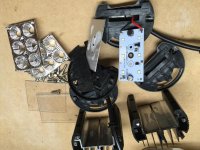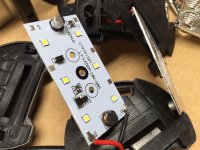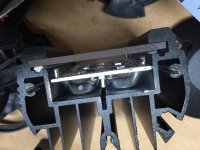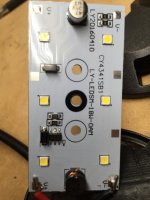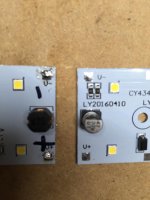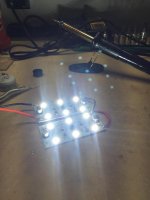I'm sure a few of you guys have taken a LED light apart, if not here are some pics. I'm using the light boards for a boating project. I bought a set of Light Fox cubes for under 13.00 shipped. They have a 4.5 star rating so they must be good. Grin....
Anyway. You can see that the side gaskets are sealing the side caps. There is a gasket behind the clear lens but it was not touching much. The power cord also has a clear liquid sealant. Looking at the waterproofing I can only assume the would have potentially leaked.
I was surprised at how thin the boards are, amazing technology! A little flat chip will make you see spots! I ran the boards without the heat soaking housing and they never really got hot. This is a cheap light but at the same time it has plenty of output for the trails.
I do not have a way to test the wattage. Does anyone know what the true wattage would be?
Steve
Anyway. You can see that the side gaskets are sealing the side caps. There is a gasket behind the clear lens but it was not touching much. The power cord also has a clear liquid sealant. Looking at the waterproofing I can only assume the would have potentially leaked.
I was surprised at how thin the boards are, amazing technology! A little flat chip will make you see spots! I ran the boards without the heat soaking housing and they never really got hot. This is a cheap light but at the same time it has plenty of output for the trails.
I do not have a way to test the wattage. Does anyone know what the true wattage would be?
Steve

